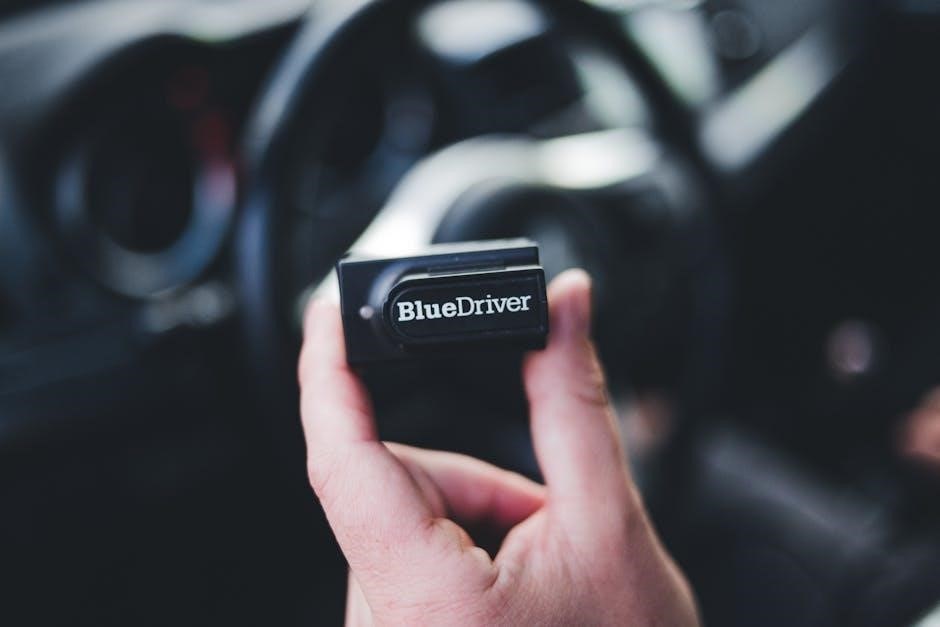The Minnesota Driver’s Manual is an essential guide for drivers‚ providing updated rules‚ safety practices‚ and licensing requirements. It reflects the latest state laws and driving standards‚ ensuring motorists are well-informed. The manual is designed for both new and experienced drivers‚ offering a comprehensive overview of traffic regulations and safe driving techniques. Recent updates include guidance for firearm-carrying drivers during traffic stops‚ emphasizing legal compliance and safety. This resource is crucial for preparing for the knowledge test and understanding Minnesota’s specific driving laws.
Overview of the Minnesota Driver’s Manual PDF
The Minnesota Driver’s Manual PDF is a comprehensive guide published by the Minnesota Department of Public Safety. It outlines state driving laws‚ licensing requirements‚ and traffic safety tips. The manual is regularly updated to reflect changes in legislation and driving practices. Available in both text and audio formats‚ it serves as a vital resource for new and experienced drivers alike. Recent updates include guidance for firearm-carrying drivers during traffic stops‚ ensuring compliance with legal standards. The PDF format allows easy access for studying and reference‚ making it indispensable for preparing for the knowledge test and understanding Minnesota’s driving regulations.
Importance of the Minnesota Driver’s Manual
The Minnesota Driver’s Manual is a vital resource for understanding state-specific driving laws‚ safety practices‚ and licensing requirements. It serves as the primary study material for the knowledge test‚ ensuring applicants are well-prepared. The manual also helps experienced drivers stay updated on changes in traffic laws and safe driving techniques. Regular updates‚ such as guidance for firearm-carrying drivers‚ reflect its adaptability to current legal and safety standards. By adhering to the manual‚ drivers can promote road safety‚ reduce violations‚ and maintain compliance with Minnesota’s driving regulations.
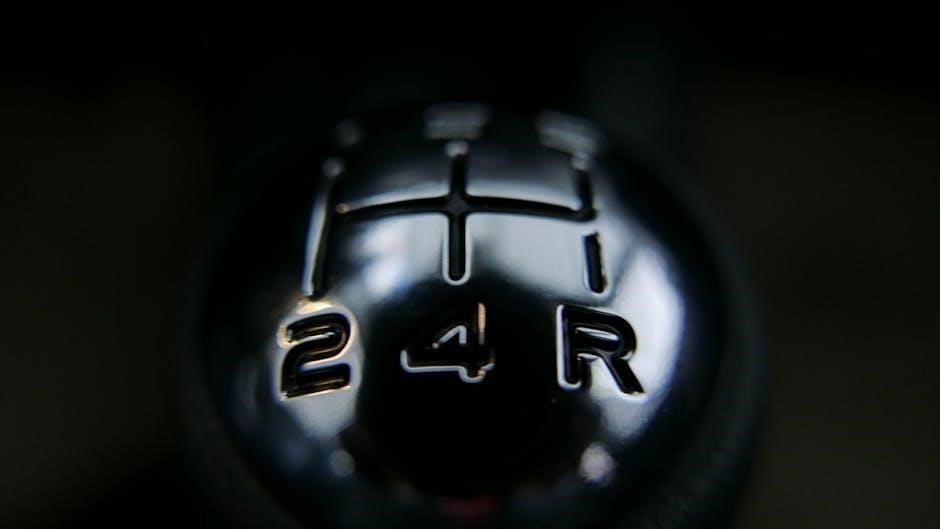
Downloading and Accessing the Minnesota Driver’s Manual
The Minnesota Driver’s Manual is easily accessible online in PDF format from the official state website‚ offering convenience for drivers to study and prepare effectively.
Where to Find the MN Driver’s Manual PDF
The Minnesota Driver’s Manual PDF is available for free on the official Minnesota Department of Public Safety website. Visit https://dps.mn.gov/ and navigate to the driver’s education section. Additionally‚ local driver’s license offices and public libraries often provide access to the manual. Ensure you download the latest version for the most accurate and updated information. The PDF is compatible with all major devices‚ making it easy to study on your computer‚ tablet‚ or smartphone. Always verify the source to avoid unofficial or outdated versions.
How to Download the MN Driver’s Manual
To download the MN Driver’s Manual PDF‚ visit the official Minnesota Department of Public Safety website at https://dps.mn.gov/. Navigate to the “Driver’s Licenses & ID Cards” section and select “Driver’s Manual.” Click on the “Download PDF” link to access the manual. Ensure you select the latest version for updated information. The PDF is free and compatible with all devices. For offline access‚ save the file to your computer or mobile device. Printing the manual is also an option for convenient study. Always verify the download source for authenticity.

Purpose and Key Content of the Minnesota Driver’s Manual
The manual educates drivers on Minnesota traffic laws‚ safe driving practices‚ and licensing requirements. It covers road signs‚ rules of the road‚ and special driving conditions.
Why the Minnesota Driver’s Manual is Essential
The Minnesota Driver’s Manual is indispensable for safe and legal driving. It provides a comprehensive guide to traffic laws‚ licensing requirements‚ and safe driving practices. The manual ensures drivers understand road signs‚ rules‚ and best practices for operating vehicles responsibly. It also covers essential topics like handling emergencies and interacting with law enforcement. By studying the manual‚ new and experienced drivers can reduce accidents‚ avoid violations‚ and stay informed about state-specific regulations. It’s a critical resource for anyone aiming to drive confidently and legally in Minnesota.
Key Topics Covered in the MN Driver’s Manual
The Minnesota Driver’s Manual covers essential topics to prepare drivers for safe and lawful driving. It includes detailed information on traffic laws‚ road signs‚ and safe driving practices. The manual also addresses licensing requirements‚ vehicle safety inspections‚ and emergency procedures. Additionally‚ it provides guidance on handling special driving conditions‚ such as winter weather and nighttime driving. The content is structured to ensure drivers understand their responsibilities and can navigate Minnesota’s roads confidently. This comprehensive approach makes the manual an invaluable resource for all drivers.
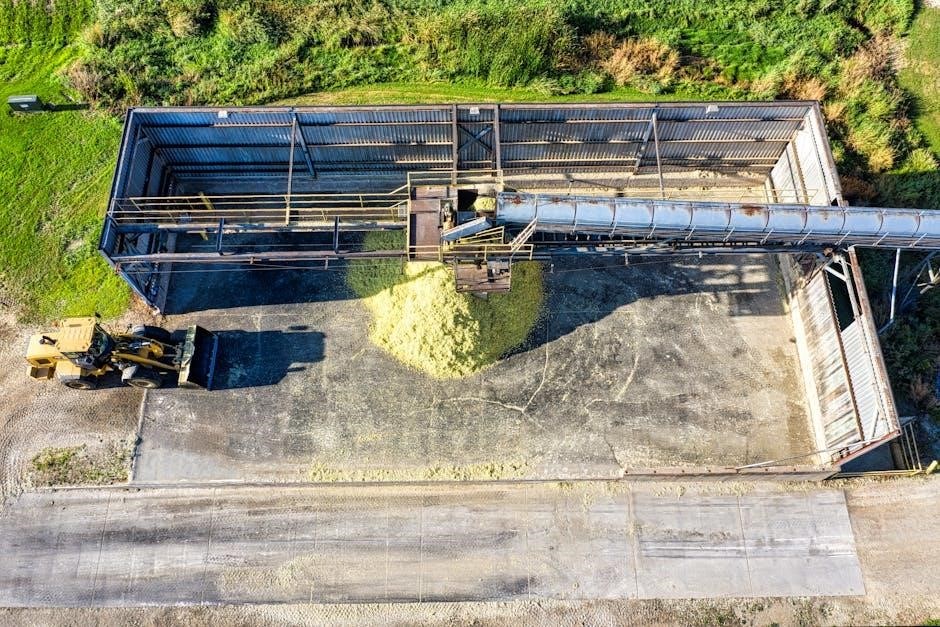
Eligibility for a Minnesota Driver’s License
Eligibility requires meeting residency‚ age‚ and documentation standards‚ along with passing vision and knowledge tests. Specific criteria vary based on license type and applicant status.
Residency Requirements for a Minnesota Driver’s License
To apply for a Minnesota driver’s license‚ applicants must prove residency within the state. Acceptable documents include utility bills‚ lease agreements‚ or bank statements. Applicants must provide two forms of documentation showing their name and Minnesota address. Temporary residents‚ such as students or military personnel‚ may also apply but must meet specific criteria. Proof of residency is essential to establish eligibility and ensure compliance with state licensing regulations.
Age Requirements for Applying
In Minnesota‚ the minimum age to apply for a driver’s license is 15 for a learner’s permit. At 16‚ applicants can obtain a provisional license after completing driver’s education and supervised driving hours. Full unrestricted licenses are issued at 17‚ provided all requirements are met. Applicants under 18 must have parental consent. The graduated licensing system ensures young drivers gain experience gradually‚ enhancing safety. Each stage has specific age-related requirements to progress.
Documentation Needed for Application
To apply for a Minnesota driver’s license‚ you must provide specific documents. These include proof of identity‚ such as a birth certificate or valid passport‚ and proof of residency‚ like a utility bill or bank statement. You must also show legal presence in the U.S.‚ which can be demonstrated with a Social Security card or tax documents. Applicants under 18 require parental consent. All documents must be originals or certified copies. Additional requirements may apply for non-citizens. Ensure all paperwork is complete to avoid delays in processing.
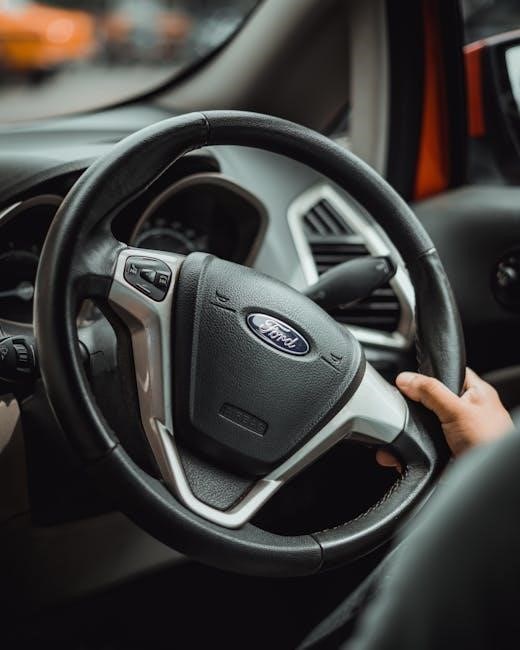
Types of Driver’s Licenses in Minnesota
Minnesota offers various driver’s licenses‚ including Class D for operating passenger vehicles‚ CDL for large vehicles‚ Motorcycle licenses‚ and specialized endorsements for specific driving needs.
Class D Driver’s License
A Class D driver’s license in Minnesota allows individuals to operate passenger vehicles‚ including cars and small trucks. It is the most common type of license for personal use. To qualify‚ applicants must be at least 17 years old‚ complete a driver’s education course (if under 18)‚ and pass vision‚ knowledge‚ and driving tests. Restrictions apply to drivers under 18‚ such as limits on nighttime driving and carrying passengers. The license is valid for four years and can be renewed online or by mail. It is essential for legal driving privileges in the state.
Commercial Driver’s License (CDL)
A Commercial Driver’s License (CDL) in Minnesota is required to operate vehicles with a gross vehicle weight rating (GVWR) of 26‚001 pounds or more‚ or those transporting hazardous materials. There are three classes: Class A (combination vehicles)‚ Class B (heavy straight trucks)‚ and Class C (small passenger vehicles or hazardous materials). Applicants must be at least 21 years old‚ pass a physical exam‚ and complete a CDL knowledge test. Endorsements are needed for specialized cargo like tankers or double/triple trailers. A CDL is essential for professional drivers in trucking and transportation industries.
Motorcycle Driver’s License
A motorcycle driver’s license in Minnesota allows operation of two- or three-wheeled vehicles. Applicants must be at least 16 years old (with parental consent) or 18 years old without restrictions. The process involves passing a vision test‚ a written knowledge exam‚ and a riding skills test. Completing an approved motorcycle safety course can waive the skills test. The license is essential for legal motorcycle operation and ensures riders understand traffic laws and safety practices specific to motorcycles. It promotes safe and responsible driving for motorcyclists in Minnesota.
Specialized Licenses and Endorsements
Minnesota offers specialized licenses and endorsements for drivers needing additional privileges. These include endorsements for towing trailers‚ transporting hazardous materials‚ or operating school buses. Each endorsement requires specific tests and background checks. For example‚ a school bus endorsement demands a rigorous screening process. Fees and requirements vary based on the endorsement type. Drivers must meet all eligibility criteria and pass relevant exams to obtain these specialized licenses. The MN Driver’s Manual details the process and requirements for each endorsement‚ ensuring drivers are qualified for specialized roles on the road.

Application Process for a Minnesota Driver’s License
Applying for a Minnesota driver’s license involves several steps‚ including visiting a DMV office‚ providing required documents‚ and passing vision‚ knowledge‚ and driving tests. Fees apply.
Step-by-Step Guide to Applying
To apply for a Minnesota driver’s license‚ start by gathering required documents‚ including proof of identity‚ residency‚ and legal status. Visit your local Driver and Vehicle Services (DVS) office. Complete the application form and submit it along with your documents. Pass a vision test and pay the applicable fees. If you’re a new driver‚ you’ll need to pass a knowledge test and a driving skills test. Once all requirements are met‚ your license will be issued. Ensure all information is accurate to avoid delays.
Required Documents for Application
To apply for a Minnesota driver’s license‚ you must provide specific documents. These include one proof of identity (e.g.‚ valid passport or birth certificate)‚ one proof of residency (e.g.‚ utility bill or bank statement)‚ and one document verifying your Social Security number (e.g.‚ Social Security card or W-2 form). Additional documentation‚ such as a marriage certificate‚ may be needed if your name has changed. Ensure all documents are valid and not expired to avoid application delays.
Fees Associated with Licensing
Fees for a Minnesota driver’s license vary based on the type of license and applicant age. A standard Class D license typically costs $25.25 for a 4-year renewal. Commercial driver’s licenses (CDLs) and motorcycle licenses have higher fees‚ ranging from $50 to $100. Additional fees may apply for duplicate licenses‚ reinstatements‚ or other services. Payment can be made via cash‚ check‚ or credit card at DVS locations. Always verify current fees on the official Minnesota DVS website or consult the driver’s manual for the most accurate information.
Testing Requirements
In Minnesota‚ applicants must pass a vision test‚ knowledge test‚ and driving skills test. The vision test ensures adequate eyesight for safe driving. The knowledge test covers traffic laws‚ signs‚ and safe driving practices‚ requiring an 80% score to pass. The driving test evaluates vehicle control and adherence to traffic laws. First-time applicants and those renewing after a suspension typically need all tests. Practice tests are available in the MN Driver’s Manual to help prepare. Ensure your vehicle meets safety standards for the driving test.

Traffic Laws and Safe Driving Practices
The MN Driver’s Manual outlines essential traffic laws and safe driving practices‚ ensuring drivers understand speed limits‚ right-of-way rules‚ and defensive driving techniques to promote road safety.
Minnesota Traffic Laws
Minnesota traffic laws are designed to ensure road safety and order. Key regulations include speed limits‚ seatbelt requirements‚ and DUI laws. Drivers must obey traffic signals and signs‚ yielding to pedestrians and emergency vehicles. Right-of-way rules are clearly defined for intersections and merges. School bus stops and pedestrian crossings have specific guidelines to protect vulnerable road users. Adhering to these laws helps prevent accidents and promotes a safe driving environment across the state. Understanding and following Minnesota traffic laws is crucial for all drivers to maintain public safety and avoid legal penalties.
Safe Driving Practices
Safe driving practices are essential for minimizing risks on Minnesota roads. Defensive driving techniques‚ such as maintaining a safe distance and anticipating others’ actions‚ are strongly encouraged. Always use turn signals‚ avoid distractions like texting‚ and never drive under the influence of alcohol or drugs. Adhering to speed limits and adjusting for weather conditions‚ like snow or heavy rain‚ is critical. Staying alert and patient‚ especially in heavy traffic‚ helps prevent accidents. Regular vehicle maintenance and proper use of seatbelts are also vital for ensuring safety. By following these practices‚ drivers can significantly reduce the likelihood of collisions and protect themselves and others on the road.
Emergency Procedures
In case of an emergency‚ stay calm and assess the situation. Move your vehicle to a safe location‚ such as the shoulder‚ to avoid obstructing traffic. Turn on hazard lights to alert other drivers. If involved in an accident‚ check for injuries and call 911 immediately. Exchange information with other parties‚ and document the scene if possible. Keep an emergency kit in your vehicle‚ including items like a first-aid kit‚ flashlight‚ and jumper cables. Always prioritize safety and follow proper protocols to handle emergencies effectively.

Minnesota Driver’s Knowledge Test
The Minnesota Driver’s Knowledge Test ensures understanding of traffic laws‚ road signs‚ and safe driving practices‚ essential for obtaining a driver’s license in the state.
Format of the Knowledge Test
The Minnesota Driver’s Knowledge Test is a multiple-choice exam designed to assess understanding of traffic laws‚ road signs‚ and safe driving practices. The test typically consists of 40 questions‚ with a passing score of at least 80%. Applicants have 60 minutes to complete it. The test is available in multiple languages and may be taken on a computer. Questions are based on information from the Minnesota Driver’s Manual‚ focusing on road rules‚ traffic signs‚ and driver safety. Retakes are allowed‚ but a fee may apply if failing multiple times.
Preparing for the Test
To prepare for the Minnesota Driver’s Knowledge Test‚ thoroughly review the Minnesota Driver’s Manual. Focus on understanding traffic laws‚ road signs‚ and safe driving practices. Take advantage of online practice tests to familiarize yourself with the test format and content. Pay attention to areas where you score low and study those sections in detail. Ensure you understand the rules of the road‚ such as speed limits‚ right-of-way rules‚ and alcohol-related laws. Practice calmly and avoid last-minute cramming to manage test anxiety effectively.
Practice Tests and Resources
The Minnesota Department of Public Safety offers various tools to help you prepare for the knowledge test. Official practice tests are available online‚ mirroring the real test format. Additionally‚ the Minnesota Driver’s Manual includes sample questions and review sections. Mobile apps like Driver’s Ed Guru and DMV Genie provide interactive practice tests. These resources help you assess your knowledge and improve weak areas. Utilizing these tools ensures you are well-prepared and confident for the actual test.

Recent Updates to the Minnesota Driver’s Manual
The latest edition of the Minnesota Driver’s Manual includes updates on new traffic laws‚ enhanced road safety guidelines‚ and clarified driver responsibilities. Digital enhancements improve accessibility and understanding.
Changes in the Latest Edition
The latest edition of the Minnesota Driver’s Manual includes updates on new traffic laws‚ enhanced road safety guidelines‚ and clarified driver responsibilities. It features revised sections on distracted driving‚ pedestrian safety‚ and bicycle laws. Digital enhancements‚ such as improved readability and interactive links‚ make the manual more user-friendly. New content addresses emerging technologies like autonomous vehicles and electric cars. These updates ensure drivers are well-informed about current regulations and safe driving practices in Minnesota.
Guidance for Firearm-Carrying Drivers
The Minnesota Driver’s Manual now includes guidance for drivers who carry firearms. It outlines legal requirements‚ such as permits for concealed carry and proper storage in vehicles. The manual emphasizes responsible handling to avoid accidents or legal issues. Drivers are advised to notify law enforcement of firearms during traffic stops. Additional tips cover safe storage methods and compliance with state laws. This section aims to ensure firearm-carrying drivers understand their rights and responsibilities while operating a vehicle in Minnesota.
Updated Traffic Stop Procedures
The Minnesota Driver’s Manual provides updated guidance on traffic stop procedures to enhance safety and clarity. Drivers are instructed to pull over safely‚ turn off the engine‚ and keep hands visible. The manual emphasizes the importance of following officer instructions and remaining calm. New protocols include informing officers of firearms in the vehicle and understanding rights during searches. These updates aim to improve interactions between drivers and law enforcement‚ ensuring legality and safety for all parties involved during traffic stops.
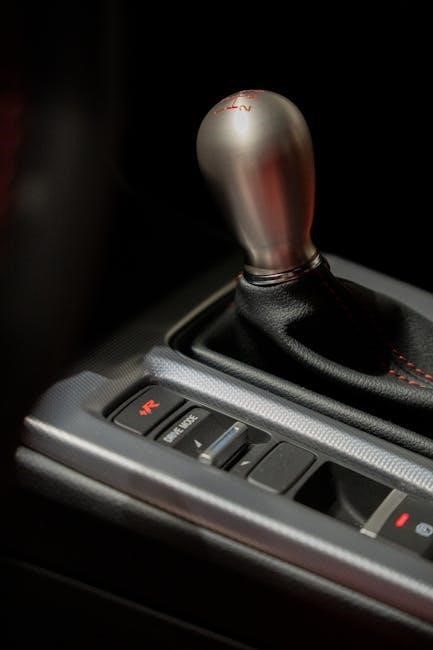
Additional Resources for Minnesota Drivers
The Minnesota Driver’s Manual PDF provides links to online guides‚ practice tests‚ and instructional videos to aid in understanding traffic laws and safe driving practices.
Multimedia Resources
The Minnesota Driver’s Manual PDF includes links to multimedia resources such as instructional videos‚ interactive guides‚ and infographics. These tools help drivers understand complex traffic laws and safe driving practices through visual and engaging content. Videos cover topics like road signs‚ traffic signals‚ and emergency procedures‚ while interactive guides provide step-by-step instructions for tasks like applying for a license or handling a vehicle during a skid. These resources are accessible online and are designed to complement the manual‚ making learning easier and more effective for all drivers.
Interactive Tools and Guides
The Minnesota Driver’s Manual PDF offers interactive tools and guides to enhance learning. These include online practice tests‚ interactive driving scenarios‚ and step-by-step guides for license applications. The tools provide immediate feedback‚ helping users assess their knowledge and readiness. They complement the manual by offering engaging ways to apply the information. Accessible online‚ these resources support self-paced learning and are designed to make the learning process more effective and convenient for all users. These tools are integral to understanding and applying the material effectively.
The Minnesota Driver’s Manual PDF is a comprehensive guide essential for all drivers‚ providing crucial information to ensure safe and lawful driving practices statewide.
Final Thoughts on the Minnesota Driver’s Manual
The Minnesota Driver’s Manual PDF serves as an indispensable resource for both new and experienced drivers. It provides a detailed understanding of traffic laws‚ safe driving practices‚ and licensing requirements. By adhering to the guidelines outlined in the manual‚ drivers can significantly reduce risks on the road. Regular updates ensure the content remains relevant‚ addressing emerging issues like firearm laws and traffic stop procedures. Whether preparing for the knowledge test or refreshing existing knowledge‚ the manual is a trusted companion for maintaining road safety and regulatory compliance in Minnesota.
